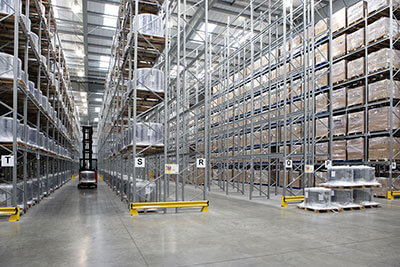 A warehouse which optimises use of the available space, which has at least some element of automation, and has a warehouse management system overseeing the operation, will be best placed to drive efficiency.
A warehouse which optimises use of the available space, which has at least some element of automation, and has a warehouse management system overseeing the operation, will be best placed to drive efficiency.
But warehouses are complex operations, with many different stages – from receiving goods to dispatch, and many stages in between. Add into this a mix of human involvement and automation, and it is clear that to make everything function in harmony is a detailed task.
This can make it difficult to spot areas which could be made more efficient, and of course the greater the efficiency, the greater the productivity.
So here are seven suggestions for improving warehouse efficiency and ultimately your profits.
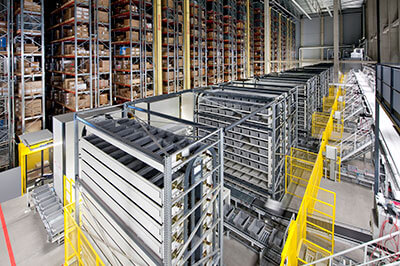 1. Invest in automation
1. Invest in automation
Automated warehouse solutions, while representing an investment, will drive efficiency in any warehouse.
Introducing a level of automation, or even opting for a fully automated warehouse, helps eradicate the chances of human error, by reducing the level of human involvement.
Not only will errors be reduced, but automation will lead to cost savings in, for example, the wages bill, training, and the cost of utilities. Automation also allows for higher density storage.
There is a vast range of automated solutions – something to fit any operation. From mobile pallet racking, to automated pallet racking; crane racking to mini loaders to retrieve small parts. Automation equals efficiency in a warehouse.
2. Provide quality training
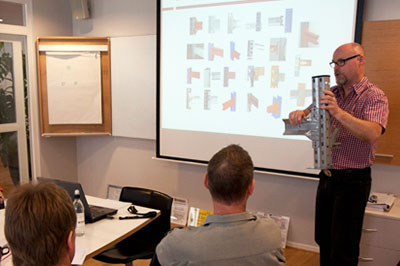 A well trained workforce will be a far more efficient workforce. So take the time at the start to provide a training and mentoring system for new members of the team. This means they will learn to do things the right way, rather than pick up bad habits.
A well trained workforce will be a far more efficient workforce. So take the time at the start to provide a training and mentoring system for new members of the team. This means they will learn to do things the right way, rather than pick up bad habits.
Ensure training is offered as part of the workforce’s development. Not only will this increase their skills and efficiency, but the training will be valued by the employees.
This will help improve staff motivation as well as staff retention, which means less needs to be spent on recruitment.
You could also consider cross training different employees in different skills. This means that any short-term gaps due to absences or sickness will be easier to fill, and you are also upskilling your workforce.
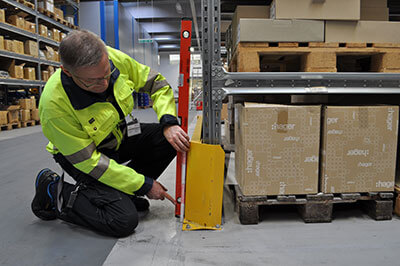 3. Make safety a priority
3. Make safety a priority
Safety should be a top priority in any warehouse operation, not just because there is a duty of care to the staff but also because adopting high safety standards actually improves efficiency.
Every time a short cut is made in safety procedures, an element of risk is introduced. And while it may seem like a saving, when accidents occur they are far more costly. Even a minor accident – such as damage to pallet racking – can cause longer term problems, as the racking may need to be repaired. More significant accidents could slow up the operation of a warehouse or – worse – stop it altogether.
4. Ask for staff feedback
Engaging staff in the operation of a warehouse brings many benefits. On a practical level, employees will have first-hand knowledge of all the processes and may have some really great ideas on how to make improvements which will boost efficiency.
 Second, staff who are consulted feel valued and that their opinion counts. They are more likely to be engaged and motivated to work harder, which in itself will drive efficiency. Consultation and two-way dialogue will help improve the running of any warehouse.
Second, staff who are consulted feel valued and that their opinion counts. They are more likely to be engaged and motivated to work harder, which in itself will drive efficiency. Consultation and two-way dialogue will help improve the running of any warehouse.
5. Measure performance
If you want to understand how well your warehouse is operating, then it is vital to benchmark each stage in the process. How long should each stage take, what and who should it involve, what should the output be? Once you have your measures, then you can analyse data on a regular basis and pinpoint any areas that appear to be under-performing – and even spot areas that are excelling.
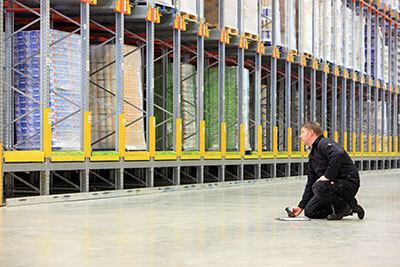 6. Looking after warehouse equipment
6. Looking after warehouse equipment
Properly maintained equipment – such as forklifts, pallet racking, or automated storage solutions – has a higher reliability factor.
Fail to maintain and service equipment, though, and there is a risk of equipment being out of action, or even no longer serviceable.
Maintaining equipment is not a corner that should be cut, as ultimately failure to look after equipment could lead to greater costs in the long run, and even compromise the safety of staff and the warehoused products.
7. Adopt the optimum storage solution
Depending on what products are being warehoused, select a storage solution that best suits those products.
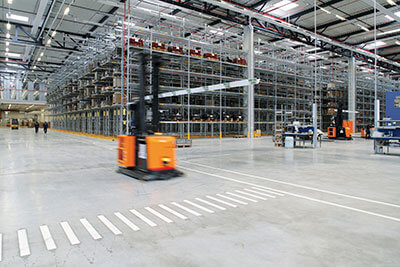 Whether you have long bulky items, that would benefit from long-span shelving; multiple items that would be best suited to selective pallet racking; products that have to be selected on a first in, first out (FIFO) basis, which would be best stored in push back racks… By selecting the most suitable storage for the purpose, you will speed up the picking process and greatly enhance the efficiency of the warehouse.
Whether you have long bulky items, that would benefit from long-span shelving; multiple items that would be best suited to selective pallet racking; products that have to be selected on a first in, first out (FIFO) basis, which would be best stored in push back racks… By selecting the most suitable storage for the purpose, you will speed up the picking process and greatly enhance the efficiency of the warehouse.
For more advice on making a warehouse efficient, or for warehouse storage solutions – both automated and semi-automated – or for help with selecting the best storage system, please get in touch with the team.